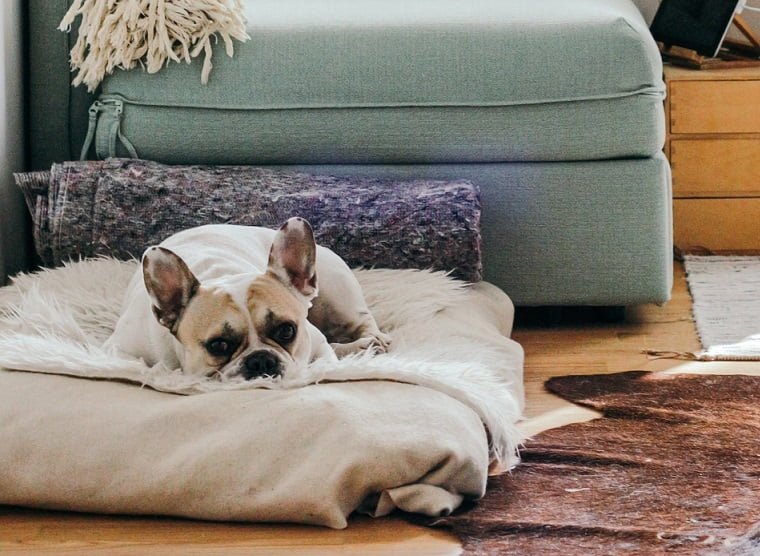Leaving your dog home alone can be a challenging and emotional experience for both pet owners and their beloved canine companions. As responsible caregivers, it’s natural to feel concerned about our furry friends’ well-being and how they cope with solitude. Dogs, being social animals, thrive on human interaction and companionship, making periods of separation a significant adjustment for them. However, with careful preparation, understanding their needs, and implementing practical strategies, we can ensure that our dogs have a positive and stress-free experience when left alone.
In this article, we will explore the various aspects of leaving your dog home alone, from recognizing signs of anxiety to helpful tips and techniques that can make the experience more manageable for both you and your furry companion.
Preparing Your Dog for Alone Time: Gradual Training Techniques
To help our dogs adapt to being home alone, a gradual and patient approach is essential. It is best to introduce short periods of separation and gradually increase the time as your dog becomes more comfortable. Positive reinforcement is a powerful tool during this training process. Offer treats, toys, or affection when your dog remains calm during your absence, which helps desensitize them to the experience of being alone. Additionally, creating a cozy and secure space, such as a designated crate or area, can provide a sense of safety and comfort for your dog when you’re not around.
Mental and Physical Stimulation: Keeping Your Dog Engaged
Boredom can exacerbate separation anxiety in dogs. Providing mental and physical stimulation before leaving can keep your pet engaged and content during your absence. Interactive toys and puzzles challenge their minds, while regular playtime and exercise help burn off excess energy. Engaging your dog’s mind and body not only reduces anxiety but also contributes to their overall well-being and happiness.
Establishing a Consistent Routine: Predictability and Comfort
Dogs thrive on routine, and establishing a consistent daily schedule can bring them a sense of predictability and comfort. Set fixed times for feeding, potty breaks, and play sessions. This regularity can help alleviate anxiety since your dog will come to expect certain events, minimizing stress and uncertainty. A well-established routine also allows your dog to anticipate when you’ll return, making the separation more manageable for them.
Calming Aids and Techniques: Soothing Your Dog’s Nerves
In cases where your dog experiences heightened anxiety, various calming aids and techniques can be beneficial. Natural remedies, such as lavender and chamomile, have calming properties that may help soothe their nerves. Calming pheromone sprays or diffusers create a calming environment, while calming music or white noise can mask outside noises that might trigger anxiety. It’s essential to try different methods and observe what works best for your individual pet.
Monitoring and Adapting: Observing Your Dog’s Progress
As you work on acclimating your dog to being home alone, it’s vital to monitor their progress closely. Keep an eye on their behavior during periods of separation and take note of any changes or improvements. Documenting their reactions and emotions can provide valuable insights into what methods are most effective for easing their anxiety.
If you notice signs of improvement, such as reduced stress behaviors or a quicker return to calmness, continue with the techniques that have been working well. On the other hand, if your dog continues to exhibit signs of distress, it may be necessary to make adjustments to your approach. Each dog is unique, and what works for one may not work for another, so be prepared to adapt your strategy to suit your pet’s specific needs.
Seeking Professional Help: When to Consult a Veterinarian or Trainer
While most dogs can benefit from the tips mentioned so far, some may require additional support and expertise to overcome severe separation anxiety. If your dog’s distress persists despite your efforts, it may be time to seek professional help. A qualified veterinarian or dog trainer with experience in behavior modification can provide valuable guidance and personalized solutions.
A veterinarian can rule out any underlying medical issues that might be contributing to your dog’s anxiety and may prescribe medications or supplements to help manage their stress. A certified dog trainer can work with you to design a tailored behavior modification plan that addresses your dog’s specific anxieties and helps build their confidence.
Nurturing Independence: Fostering Self-Reliance in Your Dog
Encouraging independence is an essential aspect of helping your dog feel more secure when left alone. Gradually teach your dog to be comfortable with moments of separation even when you are still at home. Start by creating brief distances between you and your pet within the house and gradually increase the distance and time spent apart.
Reward your dog when they remain calm and confident during these moments of separation. This positive reinforcement will help them associate being alone with positive experiences, further easing their anxiety during actual departures.
Returning Home: Greeting Your Dog with Love and Affection
When you return home after being away, it’s essential to greet your dog calmly and avoid making a big fuss. While it’s natural to want to shower them with affection, doing so may inadvertently reinforce their anxiety by creating an association between your departure and an exciting reunion.
Instead, wait a few minutes until your dog has settled down before offering affection and attention. Reward them for their calm behavior, reinforcing the idea that being alone is not a scary experience, and you will always return.







